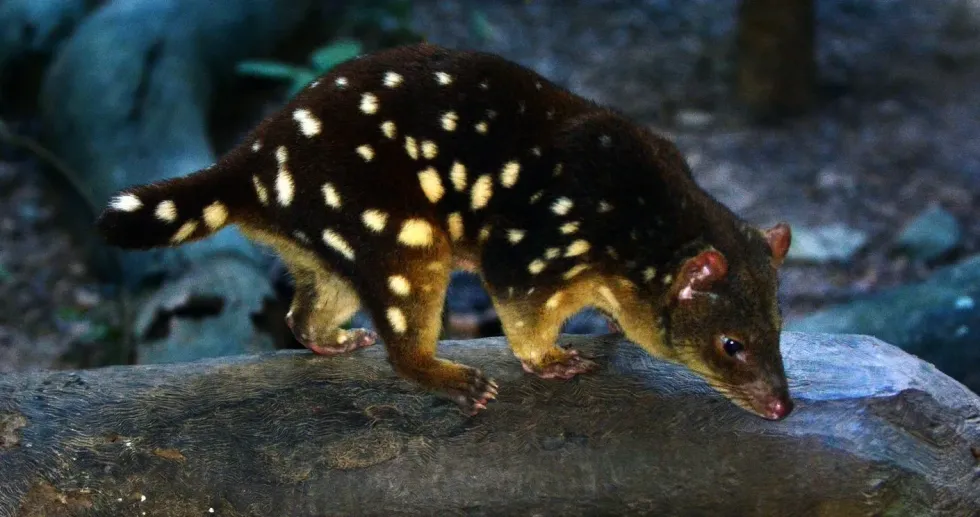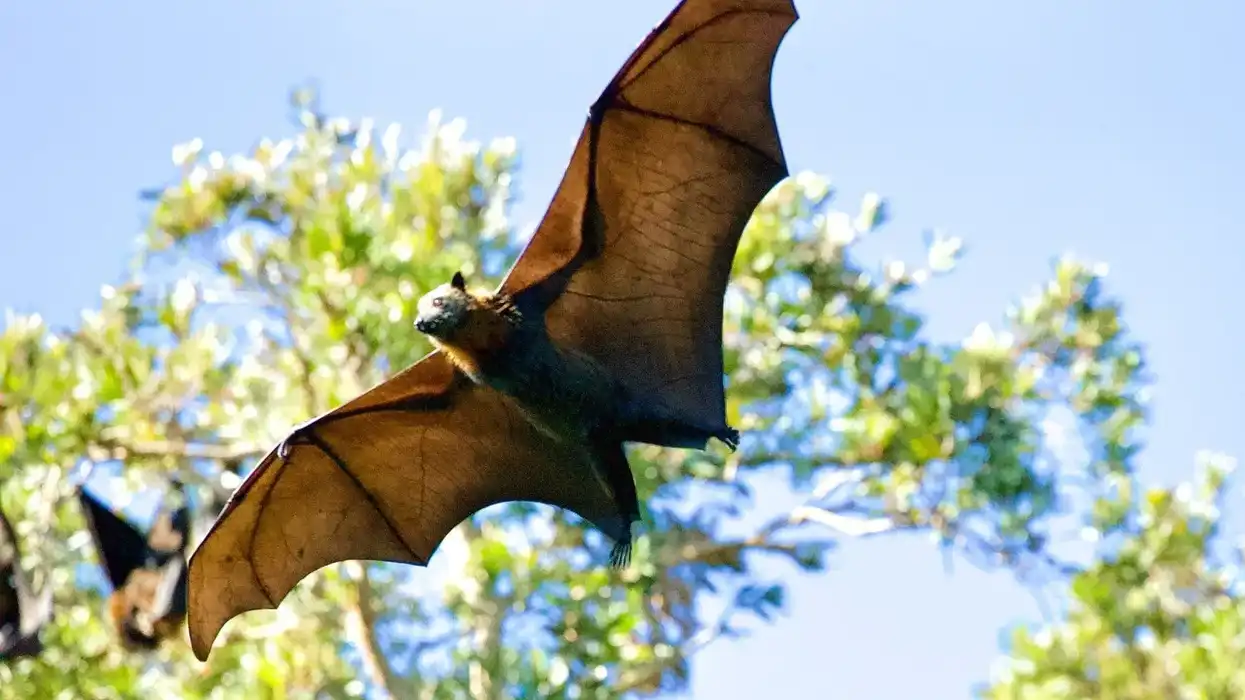The northern quolls are a medium-scaled, primarily carnivorous, marsupial living in the Northern Australia savannas. It is present in the northern parts of Western Australia and in Southeast Queensland.
The northern quoll is the smallest of the four Australian quoll species and is a medium-scale dasyurid. For several causes, northern quolls' population declined drastically because of introduced predators and altered fire patterns. The lifespan of this species can range somewhere between one to three years, and the female's life is on the longer side of the spectrum.
The northern quoll (Dasyurus hallucatus) from Australia is a species found in wooded areas, especially near rocky outcrops. During the day, they hide in hollow logs, tree hollows, and rock crevices as nocturnal creatures. Read on to learn all about this creature.
If you enjoy our article on the northern quolls, you could check out Tasmanian tiger or gemsbok.
Northern Quoll Interesting Facts
What type of animal is a northern quoll?
Northern quolls are primarily carnivorous marsupial species. However, despite their carnivorous nature, they feed on a variety of plant species and can be considered omnivorous.
What class of animal do northern quolls belong to?
The northern quolls belong to the class of Mammalia and are native to Australia and New Guinea. These are one of the smallest Australian animals.
How many northern quolls are there in the world?
A survey on the exact number of these quoll species populations is yet to be made.
The populations of northern quolls in Kakadu National Park were estimated to be in the range of 80,000 individuals in 2005, and a fifth of the quolls believed to have perished due to the wild cane toad invasion in the northern territory and feral cats predation. Cane toads can be very poisonous for the quolls.
Northern quoll populations in the Pilbara, and possibly elsewhere in their distribution, are extremely sensitive to even minor changes in juvenile mortality rates, and this species is under major threat.
Where does a northern quoll live?
The northern quolls range from Western Australia's Pilbara coast across the Northern territory to south-eastern Queensland.
What is a northern quoll's habitat?
Although they live in a number of terrestrial environments, northern quolls are the most endangered of all the quolls from Australia. The northern quolls live in a wide range of environments, including forests with ideal den sites, including rocky areas, caves, hollow trees, termite mounds, and ground burrows.
Who do northern quolls live with?
Northern quolls of Australia, both male, and female, are sedentary, solitary, and anti-social animals. Male quolls only make contact with the female quolls for brief mating encounters.
How long does a northern quoll live?
Female northern quolls live longer than the males and the span of their life ranges from one to three years. Males typically have a one-year lifespan.
How do they reproduce?
Males and females both engage in promiscuity as their reproduction mechanism. The mating season, which occurs in late May to August, coincides with the Australian dry season.
The mating mechanism is yet to be studied, but the practices of reproduction of this near-extinct species seem to be very brutal, with males chewing the back of females' necks and clutching their sides during sexual intercourse, leaving distinct marks.
Male northern quolls die in large numbers during their first mating season, which is rare for a marsupial of this size.
Birth of the young pups occurs synchronously among a similar population during a four-week cycle after a 21-25 day gestation period, with little yearly variance. This season will start as early as late May and finish as late as August, depending on your geography.
Females may give birth to up to 17 altricial offspring in a single litter, but the normal litter size somewhere between five and eight.
Females have eight mammaries in their pouch, but they seem to have more than eight young pups.
The young pups must wriggle their way to the pouch and fight for the females' breasts to survive. Juveniles have a high rate of survival when still in the pouch, but if they leave the pouch and are left in the den, they are more likely to die.
What is their conservation status?
In the Commonwealth Environmental Protection And Conservation Act 1999, the northern quoll of Australia is classified as Endangered. Many parts of the species' historical range, especially savanna ground habitat, are now devoid of the species.
Feral cats and foxes have threatened their population, specifically after wildfire or uncontrolled grazing has destroyed their protective ground cover and habitat. This species also faces troubles in mating: search of a partner, the search of breeding habitat, irregular mating season due to various reasons.
Land clearance, planting, pasture enhancement, and logging all contribute to the destruction, erosion, and deterioration of the quoll's ecosystem. Quolls are also threatened by artificial humans circumstances like being hit by cars on the street.
Quoll numbers have been threatened in the Northern Territory as a result of the intensely poisonous cane toad invasion. When the quolls target or eat big wild cane toads, they die because the wild cane toads are extremely poisonous. Despite this, these quolls do still eat cane toads sometimes.
Northern Quoll Fun Facts
What do northern quolls look like?
Reddish-brown hairy fur with a creamy colored layer underneath, white patches on the back and belly, a black tail, and a pointed beak characterize the northern quoll. Northern quolls have a 'false' pouch on their stomach, which really is a fold of tissue.

*Please note that this is an image of an eastern quoll and not a northern quoll specifically. If you have an image of a northern quoll, please let us know at hello@kidadl.com.
How cute are they?
This quoll is considered cute by many animal enthusiasts.
How do they communicate?
Each quoll has its own natural territory, which is marked by scent and alerts strongly showing its presence. Adult quolls interact by hissing as they come into contact with one another.
How big is a northern quoll?
They are a near-extinct nocturnal species with a body length ranging from 10-14 in (25-35.5 cm). This length is about five times larger than very small birds like bee hummingbirds. The length of the tail varies between 8-13 in (20.3-33 cm). The tail of the species is quite large with respect to its body.
How fast can a northern quoll run?
No specific researches have been conducted on the speed of this threatened nocturnal quoll species. However, some sources do suggest the speed of this quoll to be around 15 mph (24.1 kph).
How much does a northern quoll weigh?
Adult females weigh between 12-24 oz (340.1-680.3 g), while adult males are much heavier and weigh between 19-39 oz (538.6-1150.6 g).
What are the male and female names of the species?
There are no specific names assigned to the male and female of the quoll's species.
What would you call a baby northern quoll?
A young quoll can be referred to as a pup. The young pup of these animals of Australia is around the size of a rice grain.
What do they eat?
The northern quolls are animals (marsupial) that search for and eat a variety of insects, small reptiles, and mammals, as well as nectar, figs, and other soft fruits to meet their nutritional requirements.
Are they dangerous?
No, northern quolls are not at all dangerous to us.
Would they make a good pet?
This marsupial can make great, lovable pets on paper, much like cats, dogs, or certain birds. However, the reality is that they are not usual pets due to their endangered population in the wild.
Although, some researchers, based on anecdotal sources, suggest that people should keep quolls as pets in order to maximize the population of these species as they have experienced loss in their natural habitat.
Did you know...
The word quoll links to an Australian aboriginal dialect. When Captain Cook first saw quolls in 1770, he overheard locals calling them by this name.
The northern quolls were given the name 'Hallucatus' in 1842, which means 'notable first digit,' because of the animal's hind paw, which has a small thumb that aids the quolls in climbing and grabbing items.
When the first settlers arrived in Australia, they called these marsupials after European animals and started referring to them as 'native cats' or 'native martens.'
A spotted-tail quoll can eat bigger birds and mammals, such as rabbits and possums.
Why is the northern quoll important?
The northern quoll is the smallest of all quolls; also referred to as a native cat, it eats a wide range of animals, insects, toads, small mammals, birds, and reptiles, as well as many plant species, nectar. Cane toads, which are poisonous to humans, are also eaten by the genus quoll.
Their consumption contributes to the preservation of ecological equilibrium in their distinct ecosystems.
Why are the northern quolls a keystone species?
They are a keystone species because of their critical role in the habitats to which they belong. Keystone species are particularly important to control the population for natural stabilization.
Due to their function in handling prey, these keystone species are often the top predators of the food chain. Northern quolls are strong predators and omnivores.
They aid in the population control to sustainable natural levels due to the wide variety of animals and plants as a part of their dietary protocol. This is why we ought to try to save this species from extinction.
Here at Kidadl, we have carefully created lots of interesting family-friendly animal facts for everyone to discover! Learn more about some other mammals from our lemming facts and pygmy slow loris facts pages.
You can even occupy yourself at home by coloring in one of our free printable northern quoll coloring pages.









